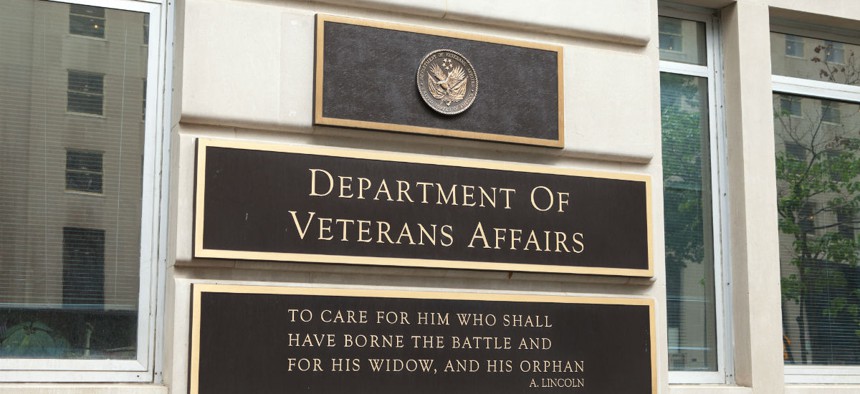'Chaos' as VA Implements Executive Order Limiting Union Official Time
Union says provisions of the recent order have been enacted inconsistently, with little communication.
The Veterans Affairs Department announced Friday that it has begun implementation of the Trump administration’s controversial executive order significantly curbing unions’ ability to use official time to represent employees.
The department said about 1,700 of the VA’s more than 300,000 employees use official time, the practice by which an agency compensates a union employee for representational work. In a statement, Nathan Maenle, principal deputy assistant secretary in the VA Office of Human Resources and Administration, outlined in broad terms what the EO means for employees.
“VA employees who previously spent 100 percent of their official work hours on union issues can devote no more than 25 percent of that time to the union under the new executive order,” he said. “Union leaders must also request and receive approval of their use of taxpayer-funded union time to allow the VA to monitor the use of this time to ensure that it’s only used for authorized purposes.”
In testimony before the House Veterans' Affairs Committee Tuesday, acting VA Secretary Peter O’Rourke said that of the 1,700 employees who use official time, 472 are in that status full time.
But the American Federation of Government Employees said the department has provided little in the way of guidance on how to proceed, leading to “chaos” and inconsistencies.
“The VA failed to give the field any direction on how to implement [the executive order] in a consistent manner,” said Ibidun Roberts, an attorney with AFGE’s National VA Council. “Some facilities have implemented retroactive to last Friday; others have cut off employees’ [Personal Identity Verification] cards, preventing them from doing representational or agency work; and some have eliminated official time altogether.”
The department sent a memo to AFGE Tuesday outlining its intent to implement the executive order and rescind a number of pieces of a collective bargaining agreement first reached in 2011 and then automatically renewed each year since 2014. The memo highlighted 15 provisions of the agreement deemed to be “inconsistent” with the official time executive order.
“This is notification of the agency’s intent to terminate contractual provisions that are inconsistent with the [executive order] and implement the requirements of the executive order,” wrote Tamika Hinton, a VA labor relations specialist. “If the union seeks to bargain, the parties will meet through post-implementation bargaining, within 30 calendar days after the receipt of this notice.”
But union officials said efforts to clarify how the department is implementing the order, and what exactly needs to be changed in the CBA, have been stonewalled.
“[VA] has failed to respond to any of our requests to clarify this chaos caused by the department,” Roberts said.
In the meantime, AFGE said it considers the existing bargaining agreement to remain in full effect until the department and the union reach an agreement on a new contract. And next week, AFGE, along with more than a dozen other federal employee unions, will appear before a federal judge to argue that the Trump administration's recent workforce executive orders are unconstitutional.




